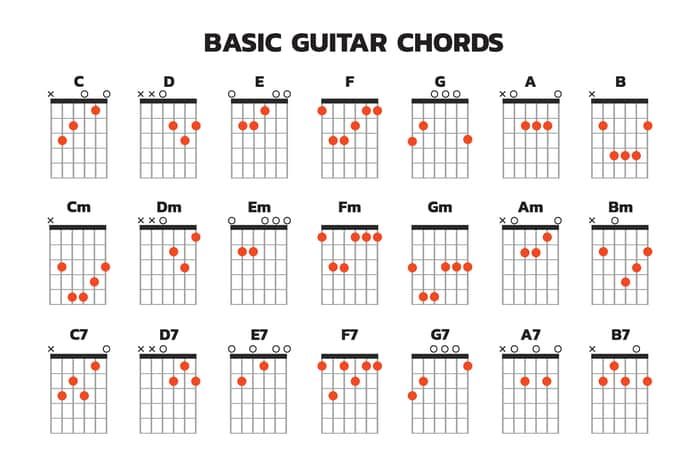A Comprehensive Guide to Guitar Chords: Unlocking the Magic of Music

Introduction
Guitar chords form the foundation of countless songs, making them essential for any aspiring guitarist. Whether you’re a beginner picking up a guitar for the first time or an experienced player looking to refine your skills, understanding guitar chords is key to unlocking the instrument’s potential. This article will delve into the intricacies of guitar chords, their types, how to learn them effectively, and their role in music theory.
What Are Guitar Chords?
At their core, guitar chords are a group of notes played together to create harmony. When you strum multiple strings on a guitar while pressing specific frets, you produce a chord. These chords are the backbone of most music, forming the harmonic framework that melodies are built upon.
Types of Guitar Chords
- Open Chords: These are beginner-friendly chords played on the first three frets, utilizing open strings. Examples include C major, G major, and E minor.
- Barre Chords: These involve pressing down all strings across a fret with one finger, allowing for greater versatility in key changes.
- Power Chords: Commonly used in rock and metal, these are simplified versions of barre chords, focusing on just two or three notes.
- Extended Chords: Found in jazz and advanced music, these include variations like 7ths, 9ths, and 13ths.
- Diminished and Augmented Chords: These add tension and complexity to compositions.
How to Learn Guitar Chords Effectively
Start with Basics
Begin with open chords, as they are easier to play and widely used in songs. Practice transitions between chords to build muscle memory.
Use Chord Charts
Chord charts provide visual guidance on finger placement. Familiarize yourself with common symbols and diagrams to interpret them quickly.
Practice Strumming Patterns
Combine chord practice with strumming patterns to develop rhythm and timing. Start slow and gradually increase speed.
Leverage Technology
Apps like GuitarTuna and Yousician offer interactive chord tutorials and feedback, making practice engaging.
Consistent Practice
Daily practice sessions, even for 10-15 minutes, can significantly improve your proficiency over time.
The Role of Guitar Chords in Music Theory
Understanding the theory behind chords can elevate your playing and composition skills. Here are some key concepts:
Chord Construction
- Major Chords: Built from the root note, major third, and perfect fifth.
- Minor Chords: Use a minor third instead of a major third, creating a somber tone.
- Seventh Chords: Add a seventh interval to a major or minor chord for depth.
Chord Progressions
Chord progressions are sequences of chords that create a sense of movement in music. Common progressions include:
- I-IV-V-I (used in pop and rock)
- ii-V-I (found in jazz)
Scales and Modes
Chords derive from scales. For example, the C major scale (C, D, E, F, G, A, B) forms the basis of C major, A minor, and related chords.
FAQs About Guitar Chords
1. What is the easiest chord to learn on guitar?
The E minor chord is often considered the easiest due to its simple two-finger placement.
2. How long does it take to learn guitar chords?
With consistent practice, you can learn basic chords in a few weeks. Mastery takes longer and depends on individual dedication.
3. Can I play songs with just a few chords?
Absolutely! Many popular songs use just three or four chords.
4. What are the most common beginner chords?
C major, G major, D major, E minor, and A minor are great starting points.
5. How can I improve my chord transitions?
Practice switching between chords slowly and repeatedly. Use a metronome to maintain a steady pace.
Conclusion
Mastering guitar chords is an exciting journey that unlocks the ability to play your favorite songs, compose original music, and deepen your understanding of music theory. With regular practice and the right resources, anyone can develop this essential skill and enjoy the timeless joy of guitar playing.



